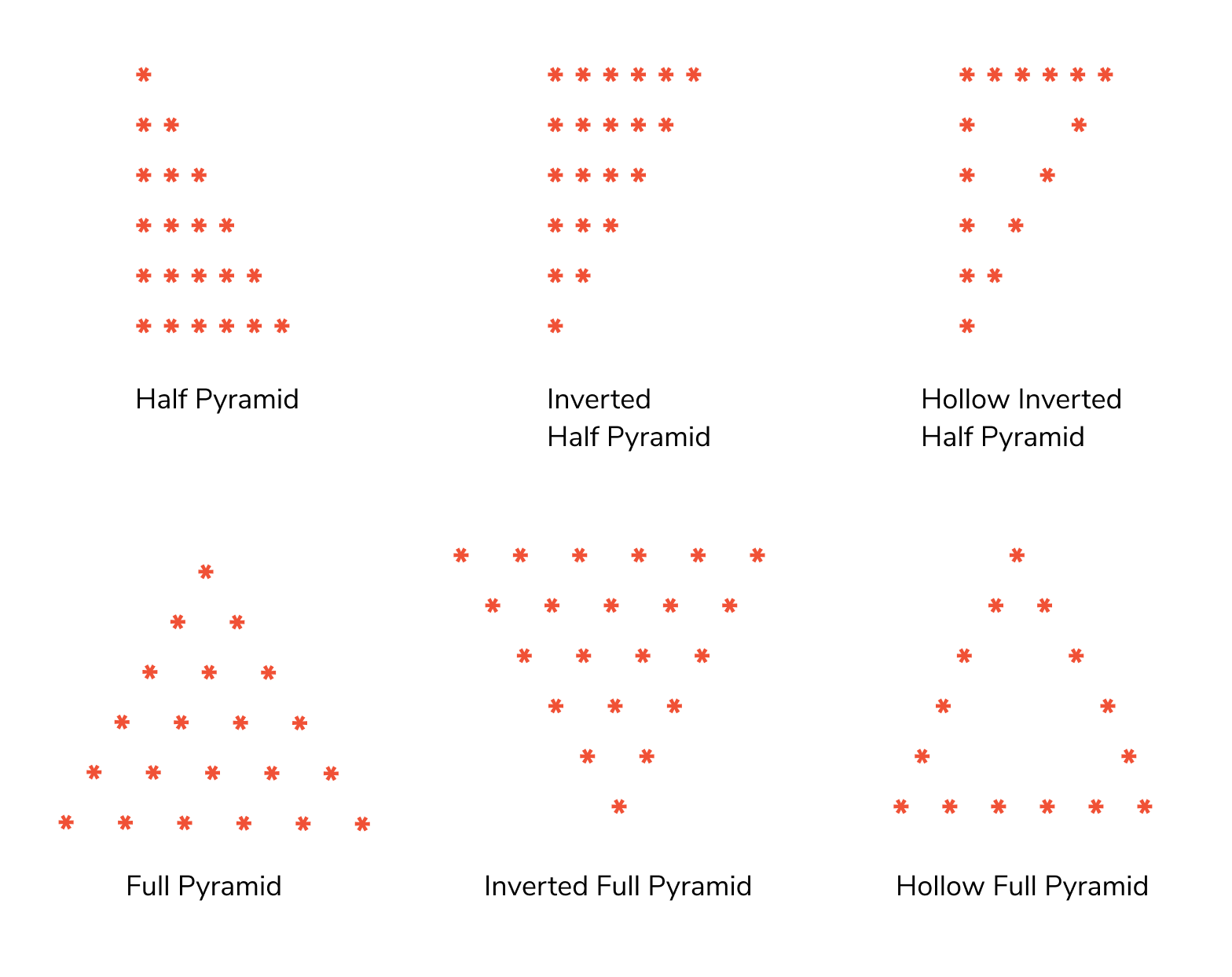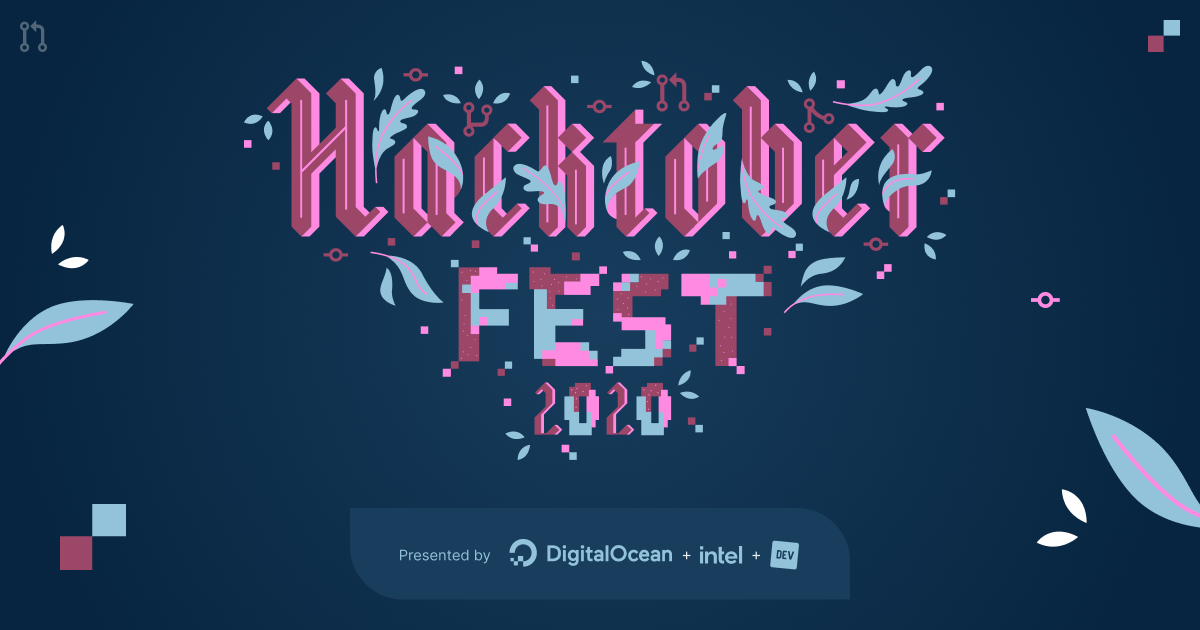🎯 If you are a beginner, and looking for your first contribution, we are here to help. Just create a simple designing pattern using any language you like in our pattern repo which will be counted as your first PR. 🎯
- 🎯Open the pattern folder in your code editor of your choice.
- 🎯Make any design pattern you like using any programming language.
- 🎯Save your changes and give its name by your github username.
- 🎯Upload the screenshot of your pattern in pattern_screenshot and give its name by your github username.
- 🎯Upload your photo in photo folder and give its name by your github username.
- 🎯Now add your profile details in contributors folder (Name, GitHub Username, Institution, Photo Title [In GitHub Username] and Screenshot Title [In GitHub Username])
- 🎯Done! You are ready to create your pull request.
🙅🏼♂️Hacktoberfest is open to everyone in our global community. Whether you’re new to development, a student, long-time contributor, event host, or company of any size, you can help drive growth of open source and make positive contributions to an ever-growing community. All backgrounds and skills levels are encouraged to complete the challenge.🙅🏼♂️
💻 Our repo is open to beginner contributors who want to participate and complete successful PR Request.
Link to register: https://hacktoberfest.digitalocean.com/
See more details at: https://hacktoberfest.netlify.com/
Go to our repo by clicking here - https://github.com/aritraroy24/HACKTOBERFEST2020_pattern
⚡ GitHub repository URLs will reference both the username associated with the owner of the repository, as well as the repository name.
⚡ When you’re on the main page for the repository, you’ll see a button to "Star" and “Fork” the repository on your upper right-hand side of the page, underneath your user icon.
⚡ To make your own local copy of the repository you would like to contribute to, let’s first open up a terminal window.
⚡ This URL will be similar to the URL above, except now it will end with .git. In the example above, the URL will look like this:
https://github.com/aritraroy24/HACKTOBERFEST2020_pattern.git
⚡ You can alternatively copy the URL by using the green “Clone or download” button from your repository page that you just forked from the original repository page. Once you click the button, you’ll be able to copy the URL by clicking the binder button next to the URL.
⚡ Once we have the URL, we’re ready to clone the repository. To do this, we’ll combine the git clone command with the repository URL from the command line in a terminal window:
git clone https://github.com/aritraroy24/HACKTOBERFEST2020_pattern
⚡ To create your branch, from your terminal window, change your directory so that you are working in the directory of the repository. Be sure to use the actual name of the repository (i.e. Hacktoberfest2020-MovieDo) to change into that directory : cd HACKTOBERFEST2020_pattern
⚡ N ow, we’ll create our new branch with the git branch command. Make sure you name it descriptively so that others working on the project understand what you are working on : git branch <YOUR-USERNAME>
⚡ Now that our new branch is created, we can switch to make sure that we are working on that branch by using the git checkout command : git checkout <YOUR-USERNAME>
⚡ Once you enter the git checkout command, you will receive the following output:Switched to branch '<YOUR-USERNAME>'
⚡ At this point, you can now modify existing files or add new files to the project on your own branch.
⚡ Make sure you have read the CONTRIBUTING.md before you start contributing such that you make remarkable and easily acceptable PRs.
⚡ Once you have modified existing files or added new files to the project, you can add them to your local repository, which you can do with the git add command. Let’s add the -A flag to add all changes that we have made : git add -A or git add .
⚡ Next, we’ll want to record the changes that we made to the repository with the git commit command.
⚡ The commit message is an important aspect of your code contribution; It helps the other contributors fully understand the change you have made, why you made it, and how significant it is. Additionally, commit messages provide a historical record of the changes for the project at large, helping future contributors along the way. Thus, you must ensure that you write a meaningful commit message. If in a confusion, refer to the good contribution guidelines included in the CONTRIBUTING.md .
⚡ At this point you can use the git push command to push the changes to the current branch of your forked repository:
⚡ While working on a project alongside other contributors, it is important for you to keep your local repository up-to-date with the project as you don’t want to make a pull request for code that will cause conflicts. To keep your local copy of the code base updated, you’ll need to sync changes.
⚡ Next, you’ll have to specify a new remote upstream repository for us to sync with the fork. This will be the original repository that you forked from. you’ll have to do this with the git remote add command : git remote add upstream https://github.com/aritraroy24/HACKTOBERFEST2020_pattern
⚡ In this example, // upstream // is the shortname we have supplied for the remote repository since in terms of Git, “upstream” refers to the repository that you cloned from. If you want to add a remote pointer to the repository of a collaborator, you may want to provide that collaborator’s username or a shortened nickname for the shortname.
⚡ Once you have configured a remote that references the upstream and original repository on GitHub, you are ready to sync your fork of the repository to keep it up-to-date.
⚡ To sync your fork, from the directory of your local repository in a terminal window, you’ll have to use the // git fetch // command to fetch the branches along with their respective commits from the upstream repository. Since you used the shortname “upstream” to refer to the upstream repository, you’ll have to pass that to the command : git fetch upstream
⚡ Now merge any changes that were made in the original repository’s master branch, that you will access through your local upstream/master branch, with your local master branch : git merge upstream/master
Now navigate to your forked repository, and press the “New pull request” button on your left-hand side of the page.
https://hacktoberfest.digitalocean.com/profile
Aritra Roy
👩🎓 Junior | 💻 Aspiring Web Developer | Open-Source Mentor 💜 |
The MIT License (MIT)
Copyright (c) 2020 Aritra Roy
Permission is hereby granted, free of charge, to any person obtaining a copy of this software and associated documentation files (the "Software"), to deal in the Software without restriction, including without limitation the rights to use, copy, modify, merge, publish, distribute, sublicense, and/or sell copies of the Software, and to permit persons to whom the Software is furnished to do so, subject to the following conditions:
The above copyright notice and this permission notice shall be included in all copies or substantial portions of the Software.
THE SOFTWARE IS PROVIDED "AS IS", WITHOUT WARRANTY OF ANY KIND, EXPRESS OR IMPLIED, INCLUDING BUT NOT LIMITED TO THE WARRANTIES OF MERCHANTABILITY, FITNESS FOR A PARTICULAR PURPOSE AND NONINFRINGEMENT. IN NO EVENT SHALL THE AUTHORS OR COPYRIGHT HOLDERS BE LIABLE FOR ANY CLAIM, DAMAGES OR OTHER LIABILITY, WHETHER IN AN ACTION OF CONTRACT, TORT OR OTHERWISE, ARISING FROM, OUT OF OR IN CONNECTION WITH THE SOFTWARE OR THE USE OR OTHER DEALINGS IN THE SOFTWARE.












